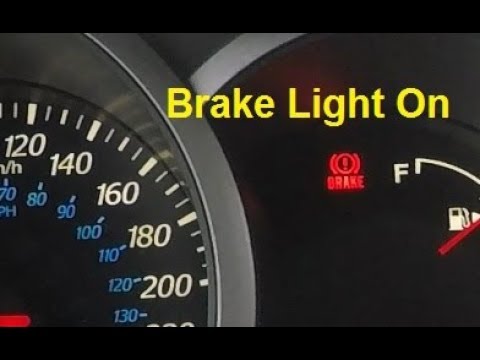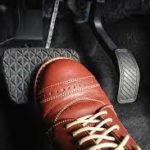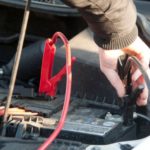Why Does My Car Shake When I Brake? If you are driving and as you apply brakes, you notice your car shakes or vibrates, there are things that are responsible for this which we want to address in this article today. So read on and learn more…
Why Does My Car Shake When I Brake?
Worn brake pads and/or rotors are one of the most common reasons for a car to shake when braking. It’s not just bad driving habits that cause worn brake pads and rotors—wear and tear is unavoidable even if you rarely use your brakes. Your brake pads become worn down due to heat and friction, which removes material from them over time; this is why they should be inspected regularly as part of routine maintenance. If your brake pads are worn out, it’s likely that your rotors will also need replacing.
Wheels are out of balance
- Wheels are out of balance when one section of the wheel is heavier than the other sections. You can check your wheels for this by spinning them and watching their movement.
- This can be caused by worn suspension parts or a bent wheel rim.
- If your dash is vibrating, it might just be the tires that need balancing.
Wheels are not properly aligned
- Uneven tire wear.
- Vehicle pulls to one side when driving.
If you have experience with cars and your own garage, you can probably check for these problems yourself. But if you don’t and aren’t mechanically inclined, you’ll definitely need the help of a professional mechanic. They will use a computerized alignment system to identify exactly what the problem is and where it’s coming from. Once they’ve done that, they can recommend which repair or repairs need to be made to fix the issue. It’s usually a relatively inexpensive repair (around 100 dollars), so if that’s all it is, then your wallet should be safe as well.
Read also: How To Bleed Brakes In Vehicles
Brake pads or rotors are warped
Braking is a necessary part of driving. When you apply the brakes, you’re slowing down the car and putting it into a controlled state where it can be stopped. After all, braking is how cars stop before they crash into other cars or objects! But when it comes to stopping your car, there are two main ways that you can do this: regular brakes and anti-lock brakes (ABS).
Anti-lock brakes are important because they provide better control of the vehicle, giving you more control over braking and stopping. Regular brakes are also an important part of a vehicle’s braking system but they don’t necessarily have to be replaced every time the brake pads or rotors need replacing. In fact some people notice that their car acts like a truck with regular brakes when new brake pads or rotors are installed. For example many people notice that their car shakes violently under heavy braking even with new brake pads or rotors installed.
You should take your car to your mechanic to get it checked out.
Clearly, one of the most important things to do if you notice your brakes shaking is to get it checked out by a mechanic as soon as you can. If you don’t, it could become more dangerous to drive your car or damage other parts of the car.
Other Causes Of Car Vibration
Your wheels are out of balance or are bent.
The weight of your wheels should be evenly distributed around their axle. When your wheels are out of balance, it can cause vibration as you drive, which can be painful and potentially dangerous for your vehicle’s performance. If you suspect that this is the case with your car, have a mechanic inspect the tires to determine if they need to be balanced or replaced.
Another common reason for steering wheel vibration is bent tires. Bent tires can cause the car to vibrate when it drives because they’re not rolling smoothly. This problem can also be caused by uneven tread wear on the tires or improper tire alignment. Having a mechanic inspect your tires and realign them if necessary should help resolve this issue.
You have poor alignment.
Poor alignment can come in many different forms, but it’s usually pretty obvious to spot. If you’re experiencing a vibration right when the car starts moving and then it just goes away, you probably have an alignment issue.
Alignment is important because it can be a major safety risk if your tires are not aligned properly. Also, driving on unaligned tires can make your ride bumpier than necessary and will wear down your tires faster over time. Fortunately, most modern cars have some form of electronic or mechanical system that alerts them when the alignment needs to be checked.
How do I check my alignment?
Use this simple guide to learn how to check alignment and see if you need an adjustment:
- Visible evidence: This is the easiest way—just look at the front wheels on your vehicle. If they are angled in or out from each other, or if one front tire looks lower than the other, you probably need an adjustment.
- Steering wheel pull: When you drive straight ahead for a little while and then let go of the steering wheel (not while moving), does it continue straight ahead? If not, its time to get adjusted!
- Tires: If there are uneven tire treads between tires on the same axle, they may need adjustment
You have low tire tread.
This is a common reason for car vibration. The tires on your car need to have at least 1/16th of an inch of tread depth for the best performance and safety. If you can see wear bars on the tread, it’s time to change your tires.
Tire treads that are too worn will cause your car to vibrate when it’s in motion. To check your tread depth, insert a quarter into one of the tire’s grooves with Washington’s head pointed downward. Look to see if Washington’s head is even with the top of the treads. If you can see all of his head, then it’s time for new tires.
One of your tires is worn more than the others.
One of your tires is worn more than the others. If you have one tire that is more worn than the rest, it’s possible that it is misaligned or underinflated.
How can you tell? To check your tread depth and see if a tire’s worn more than the others, use a penny test: place a penny upside down in the grooves of the tire with Lincoln’s head toward the tread — if you can see all of Abe’s head, your tires are bald and need to be replaced right away! If not, there may be another issue.
Your drive shaft is out of balance.
If your drive shaft is out of balance, it will cause a vibration that you’ll feel through your seat and floorboard. This can damage other components on your vehicle, so it should be repaired as soon as possible. You may need to have the drive shaft replaced by a professional mechanic.
Your tires are not inflated properly.
Under-inflation, or having too little air in your tires, is one of the most common causes of car vibration. In this situation, the tires are not able to support the weight of your car as they’re meant to—this is a driving hazard and should be addressed right away. If a tire is under-inflated, it will experience more rolling resistance than normal and wear unevenly. Over time, this can damage other parts of the vehicle such as control arms and bearings.
Over-inflation has similar effects on vehicle performance and functionality. When you overfill your tires with air, it causes them to wear more on their outer edges during use. This means that you’ll need new tires more frequently. Plus, if your tires are over-inflated (or under-inflated) by just a few pounds per square inch (PSI), it can reduce fuel efficiency by up to 3%.
Checking your tire pressure should be done regularly—preferably at least once every two months or before each road trip—to ensure that nothing untoward happens when you’re behind the wheel. You want to make sure that there aren’t any leaks in any of the tires or rims because these could lead to dangerous driving situations down the line. You can check PSI levels with a tire gauge yourself or visit a local mechanic who will know what they’re doing.
You have warped brake rotors.
In many vehicles, the brake rotors are the most common source of vibration. Brake rotors can become warped if they have been subjected to excessive heat. The heat from braking can warp the rotors. Rotors can also become warped because of uneven wear patterns on them. Uneven wear patterns are usually caused by worn parts in the brake system that are not causing proper contact with the rotor surface. Moisture trapped between the rotor and hub will cause warping when it becomes heated from braking, and old, rusted rotors are more prone to warping than newer ones.
If you believe your car is vibrating due to warped brakes it may be a good idea to visit a mechanic for further diagnosis.
There are many things that can go wrong with your car that cause vibration, and it’s important to get them fixed so you can drive safely and comfortably.
There are many things that can go wrong with your car that cause vibration, and it’s important to get them fixed so you can drive safely and comfortably. Getting them fixed also improves the mechanically soundness of your car, which is important for getting warranty coverage if you need it.









